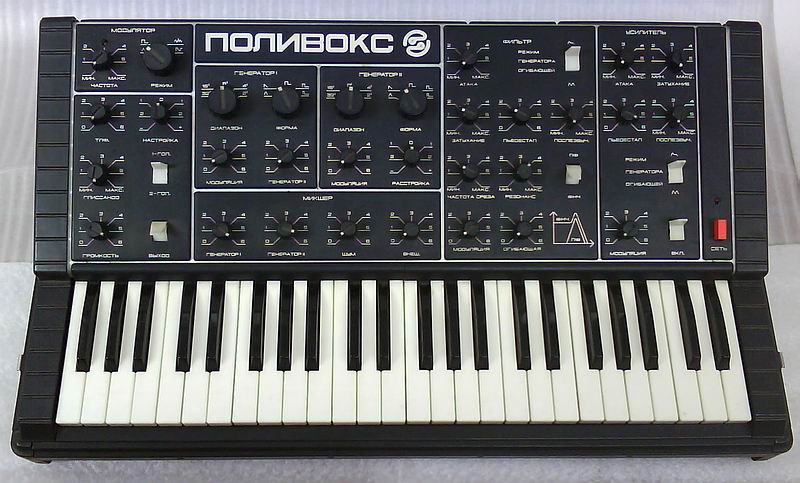
No doubt about it that synthesizers are what drives dance music this far. I mean, can you imagine if trance were to be produced on guitars and accoustic drums? And so Stoneyroads takes a look at some of our favorite vintage analogue synths in the mini-article series that will be published per-week.
images from Synthfind
Ladies and gentlement, meet the Polivoks (Russian: Поливокс), an analog subtractive synth originated from the one and only Soviet Union. First produced in the 1982, there are about 100,000 units floating around the world now. Back in the days of the Soviet Union, importing music instrument from the west was prohibited and Soviet musician had no access to any instrument that was capable of matching the sound of Japanese and American synths and this became one of the reason engineer Vladimir Kuzmin designed the Polivoks.
The Polivoks are known for the aggressive and strong tone it can produce, suitable for making searing leads and basses that cuts through the mix of your music. These sounds are made possible due to its rather unstable oscillator that gets in and out of tune over time, as well as the unique filter module that it has. Apart from being one of the more popular items among synth collectors, the synth is also known from its use by the band Franz Ferdinand in a few of their songs.
As can be seen on the pictures, all text on the controls are in russian, which adds to the enigmatic and menacing look of it, a fitting tone to such an obscure synth.
The Polivoks are not without any problems, though. Firstly, keeping its oscillators in tune has proven to be hard. Also we can imagine that finding a technician for repair purpose will be even harder. This is one thing to keep in mind when you’re thinking of acquiring a unit, especially since second hand product is all you can find since production has stopped more than two decades.
For the rest of us that are willing to compromise, a software emulation such as this Image-Line’s Sawer might be what we’re after, though nothing may replace the real thing for the most hardened synth lovers.





Comments